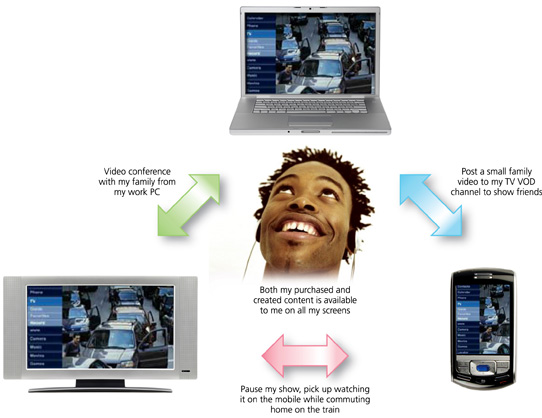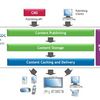On a broader level, it is really about enabling a multi-device communications experience, which has increasingly come into vogue with the proliferation of mobile devices over the past several years. But, that's really only the beginning.
The future of communications providers really lies in their ability to extend all forms of communications and multimedia content to multiple devices, such as the television monitor, the desktop, and the mobile device to deliver a true multi-screen experience.
As multimedia fixed and mobile service bundles grow in popularity, service providers are constantly seeking for the next great application or service, and subscribers are constantly asking for new capabilities, often around the integration of these services across multiple devices. Of course, service providers should be keen on taking advantage of this trend because the ability to access services across multiple devices creates a highly sticky experience.
When Microsoft launched its unified communications experience back in October of 2007, the idea was to provide the ability to access communications services on anywhere, at any time, on any device. That same basic concept is what Alcatel-Lucent's multi-screen experience delivers. For service providers, it allows them to deliver personalized services that heighten the user experience. For the subscriber, it enables moving between locations and devices with the ability to access their content on any of them. Alcatel-Lucent calls it a "Networkme," or "Network to the power of Me" experience.

Of course, the ability to deliver this level of freedom across network types and devices isn't easy. It requires enhanced network intelligence that allows the network to "know" subscriber preferences, devices, service provisioning, and more. The real key, however, is to connect this intelligence ubiquitously across all the different delivery networks and access devices at once and in real time.
A recent study commissioned by Alcatel-Lucent supports the theory, suggesting that providing a multi-screen experience would significantly increase subscriber loyalty by as much as 40 percent -- meaning that subscribers would be 40 percent more likely to stay with their existing provider. In a time when unsigned subscribers are becoming increasingly difficult to find, the ability to retain customers in a highly competitive environment is a must.
But the results imply an even greater opportunity for multi-screen service providers, as consolidating services on a single provider also implies a willingness to interact more intimately with that provider, increasing up- and cross- selling opportunities as well as providing more advertising potential. Quite simply, having access to customers on multiple devices across multiple formats increases ad impressions within a target audience.
Again, this all takes an end-to-end IP network capable of understanding where the customer is and what he is doing, as well as delivering content and applications regardless of where he is and on what device.
Alcatel-Lucent is leading the charge in this space, developing next generation communications solutions that will enable network operators to stay ahead of the curve, enabling this kind of freedom of movement across devices while retaining consistency of content. It also understands that implanting a multi-screen solution will be as unique as their subscribers, and is prepared to work hand-in-hand with providers to develop solutions that will allow them to cater to the needs of their competitive markets and subscriber demographics.
To begin executing on the multi-screen vision, start by discussing the wireless component with experts from Alcatel-Lucent on June 11, where they will be on hand at the Mobile 2012 Virtual Tradeshow. At Alcatel-Lucent's virtual booth, you'll have the chance to consider the latest trends in mobile multimedia services, applications, and content, as well as advertising and network technologies -- and how you can leverage those trends to create stickier, more personalized services on your way to a multi-screen solution.
The time is now to ensure your network is truly next generation, and not this generation. Register now for Mobile 2012 now to begin drawing your network transformation roadmap.









